Estimated reading time: 16 minutes
Copenhagen is the beautiful capital city of Denmark that is filled with many tourist attractions, beautiful landmarks, and rich culture. However, navigating through Copenhagen can be a daunting task for tourists who are unfamiliar with the city. Our guide will provide you with a comprehensive information on how to navigate Copenhagen, whether you are arriving by plane, train, or bus. We will also provide you tips on how to get around the city once you are here.
Table of contents
Copenhagen is the beautiful capital city of Denmark that is filled with many tourist attractions, beautiful landmarks, and rich culture. However, navigating through Copenhagen can be a daunting task for tourists who are unfamiliar with the city. Our guide will provide you with a comprehensive information on how to navigate Copenhagen, whether you are arriving by plane, train, or bus. We will also provide you tips on how to get around the city once you are here.
Getting to Copenhagen
By Plane
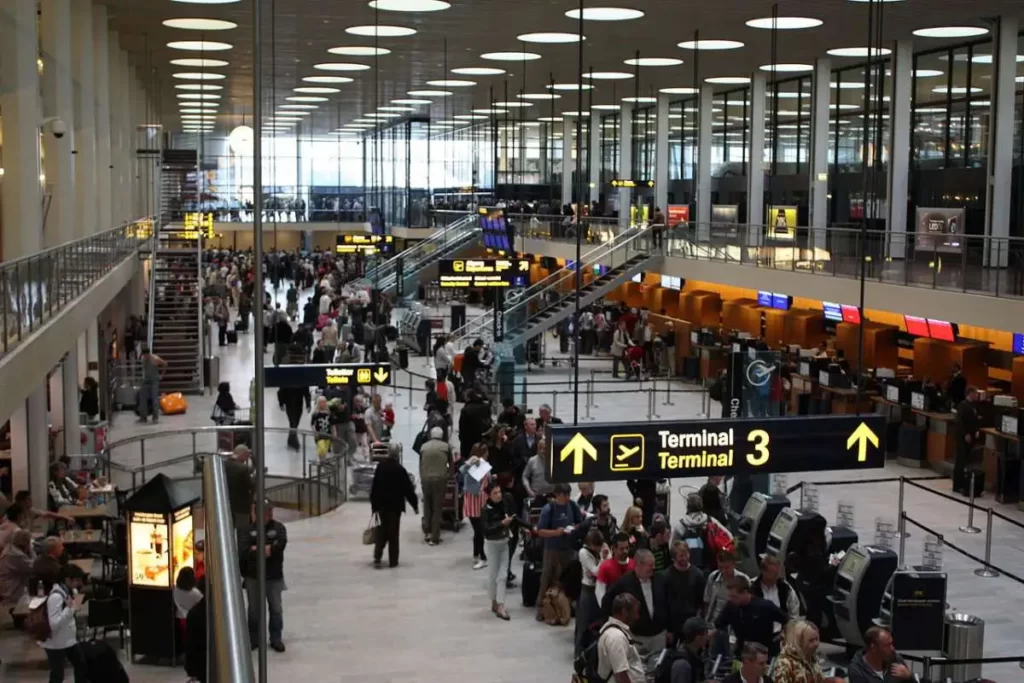
Copenhagen has a major international airport, Kastrup Airport, located just eight kilometers or four miles from the city center. The airport is well connected to major cities around the world, making it easy to fly into Copenhagen. Once you arrive at the Kastrup, you will have several options for getting to the city center. The most popular option is to take the metro, which takes just 15 minutes and costs around 4 USD. Taxis and buses are also available.
By Train
Copenhagen has excellent rail connections to other major cities in Europe. The main train station in Copenhagen is Copenhagen Central Station, which is located in the heart of the city center. Once you arrive at the station, you can easily take the metro, bus, or taxi to your final destination. You can check all of the schedules on DSB.
By Bus
If you are traveling from other parts of Denmark or neighboring countries, taking a bus to Copenhagen is a good option. There are several bus companies that offer connections to Copenhagen from other major cities like Hamburg. The main bus station in Copenhagen is located at Ingerslevsgade, which is just a short walk from the city center.
Getting Around Copenhagen
Metro
Copenhagen has an excellent metro system that connects most parts of the city. The metro is clean, efficient, and easy to use. You can buy single tickets or multi-day tickets at any metro station. The metro operates from early morning until late at night, and trains run every few minutes.
Bus
Copenhagen also has an extensive bus network that covers most parts of the city. You can buy bus tickets on board the bus or at any metro station. Buses operate from early morning until midnight. There are buses operating 24/7 during summer. The public transport in Copenhagen is very clean and reliable.
Bicycle
Copenhagen is very a bike-friendly city, and cycling is a very popular way to get around for locals and visitors. There are a lot of bike rental shops in the city where you can rent bikes for a day or longer. Copenhagen also has an extensive network of bike lanes, making it safe and easy to cycle around the city.
Taxi
Taxis are widely available in Copenhagen, but they are also the most expensive way to get around. You can use the popular taxi apps like Uber and Bolt and they both are pretty reliable and offer same rates in the city.
Copenhagen Neighborhoods
Inner City
The Inner City, or Indre By, is the historic heart of Copenhagen and features many popular tourist destinations, including the Royal Palace, Tivoli Gardens, and Strøget, the longest pedestrian shopping street in Europe. The area is also home to many historical landmarks, such as the Round Tower and the iconic Nyhavn harbor.
Christianshavn
Christianshavn is a trendy neighborhood with canals and beautiful architecture, and is known for its laid-back atmosphere and trendy cafes and restaurants. The area is also home to the famous Christiania, a self-governed neighborhood that operates independently from the Danish government and is known for its liberal attitudes towards drugs and communal living.
Vesterbro
Vesterbro is a hip neighborhood that’s popular with young people and features many bars, restaurants, and vintage shops. The area has undergone significant redevelopment in recent years and is now known for its trendy nightlife scene and eclectic mix of cultural influences. Some popular attractions in Vesterbro include the Meatpacking District, which features many restaurants and nightclubs, and the Carlsberg Brewery, which offers tours and tastings.
Nørrebro
Nørrebro is another trendy area with a diverse population and a thriving arts and culture scene. The area is known for its many ethnic restaurants, trendy cafes, and alternative nightlife options. Some popular attractions in Nørrebro include Assistens Cemetery, where is the final resting place of famous Danish author Hans Christian Andersen, and Superkilen, a public park that celebrates cultural diversity and features many interesting art installations.
Østerbro
Østerbro is a quieter, more residential area with beautiful parks and beaches. The area is popular with families and features many playgrounds and green spaces. Some popular attractions in Østerbro include the Langelinie promenade, that offers stunning views of the harbor and the iconic Little Mermaid statue, and the Fælledparken, which is one of Copenhagen’s largest parks and is home to many sports facilities and cultural events.
Frederiksberg
Frederiksberg is technically its own municipality, but it’s located within Copenhagen’s city limits and is known for its upscale shops, restaurants, and beautiful gardens. The area is home to many historic landmarks, such as the Frederiksberg Palace and the Copenhagen Zoo, and features many cultural events and festivals throughout the year.
Essential Tips for Navigating Copenhagen
Language
Danish is the official language of of the country, Denmark, but most Danes speak excellent English. You should have no trouble communicating with locals in English.
Currency
The currency in Denmark is the Danish krone (DKK). Credit cards are generally accepted in Copenhagen, but it’s actually a good idea to carry some cash with you, especially for ferries and street food that might not offer card terminals.
Safety
Copenhagen is generally a very safe city, but like any big city, it’s important to take precautions to avoid pickpockets and scams. Make sure to keep your valuables close to you and be cautious of your surroundings. If you need help or have an emergency, dial 112 or check the following link.
Climate
Copenhagen has a mild, temperate climate with cool summers and cold winters. The best time to visit Copenhagen is the summer months (June-August) when it is sunny. But, be prepared for occasional rain showers, as Copenhagen is known for its unpredictable weather.
Nightlife
Copenhagen has a very lively nightlife, with lots of clubs, bars, and live venues to choose from for every taste and age. The city is known for its craft beer culture, so be sure to try a local brew at one of the many craft beer bars, such as Mikkeller or Warpigs. If you’re looking for a night out on the town, head to the trendy neighborhoods of Vesterbro or Nørrebro, where you’ll find a lively mix of bars and clubs.
Main Attractions
Tivoli Gardens
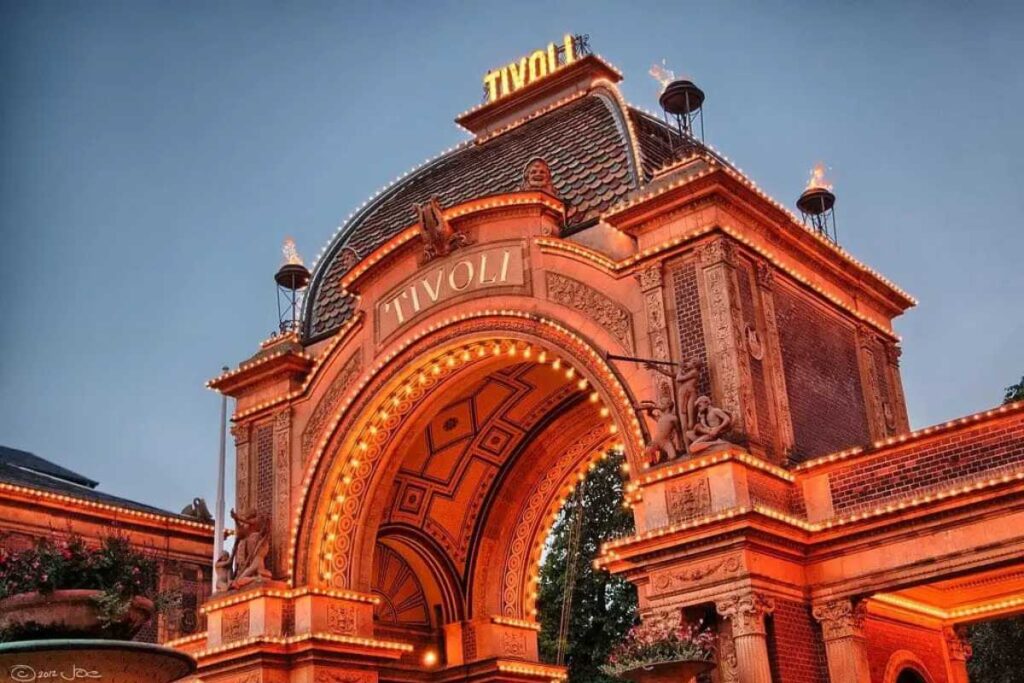
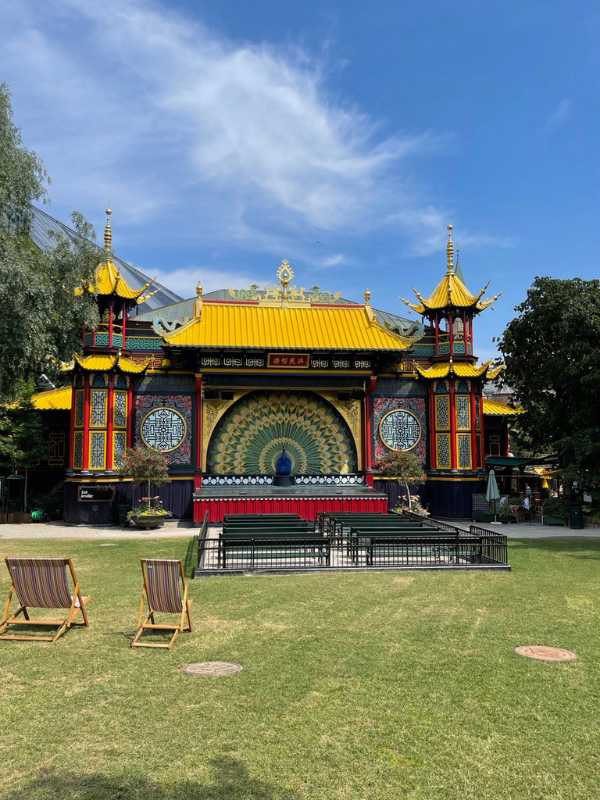
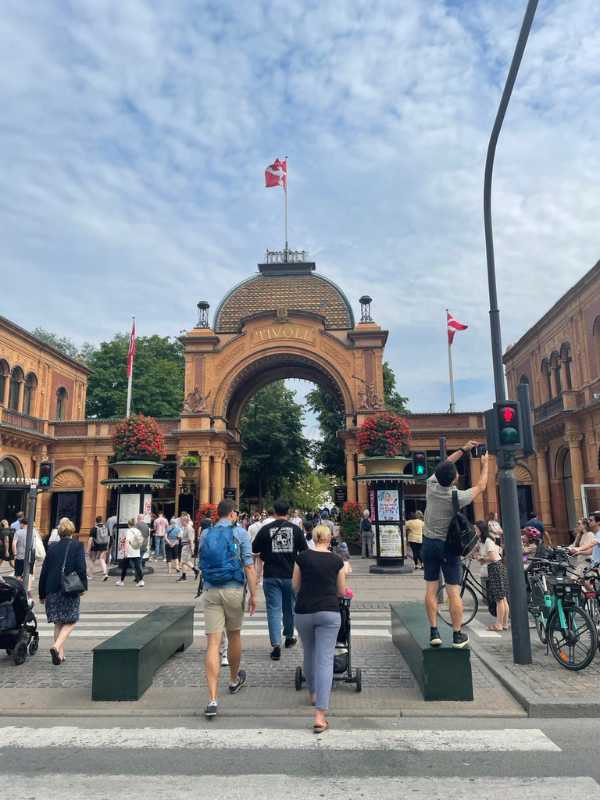
Tivoli Gardens is an amusement park located in the heart of Copenhagen and probably the main landmark of the city. It was founded in 1843 and is among the oldest amusement parks in the world. The park is known for its charming atmosphere, beautiful gardens, and thrilling rides, including roller coasters and a giant Ferris wheel. Tivoli also features live entertainment, including concerts and shows, and a wide variety of dining options.
Nyhavn

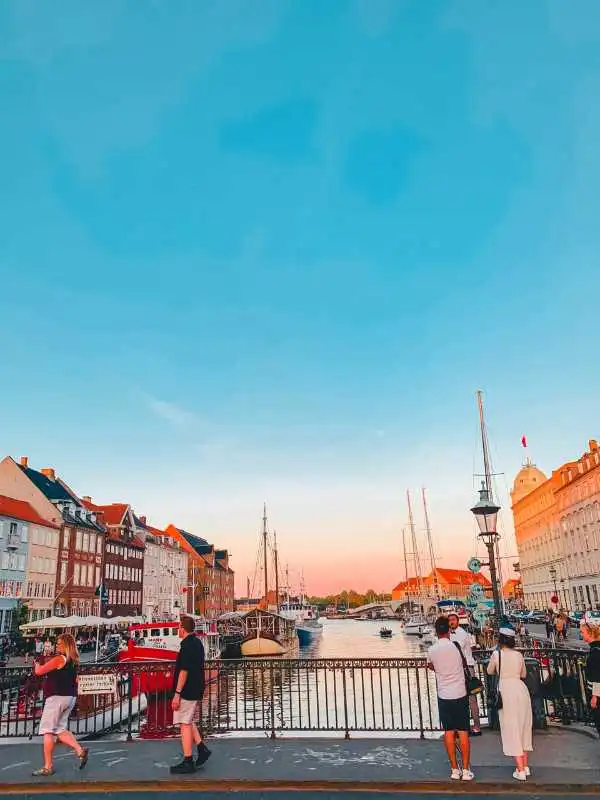
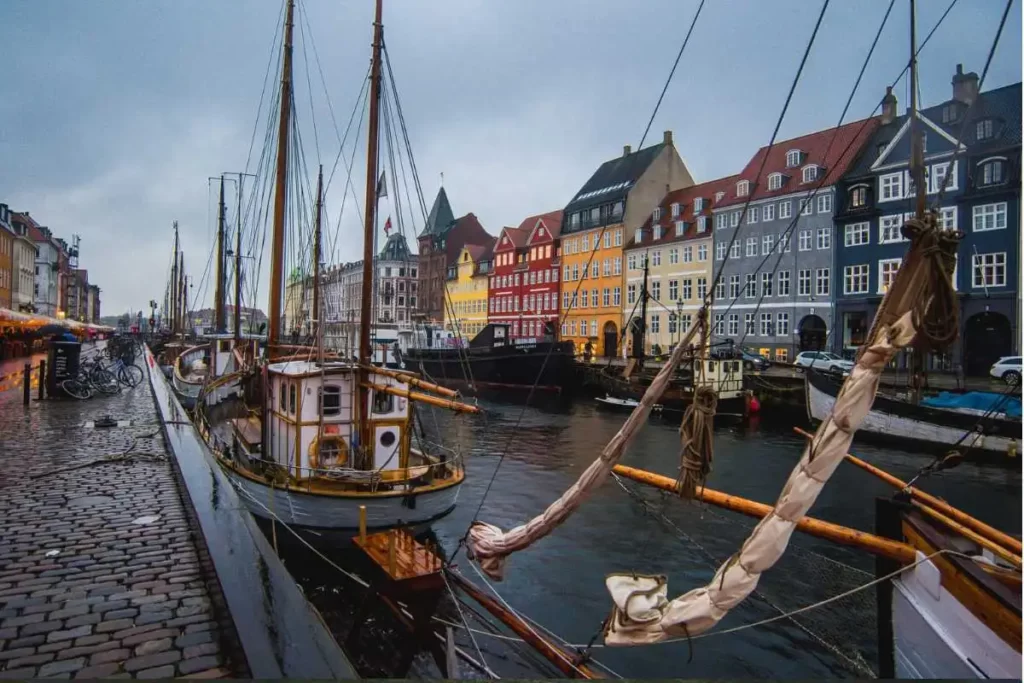
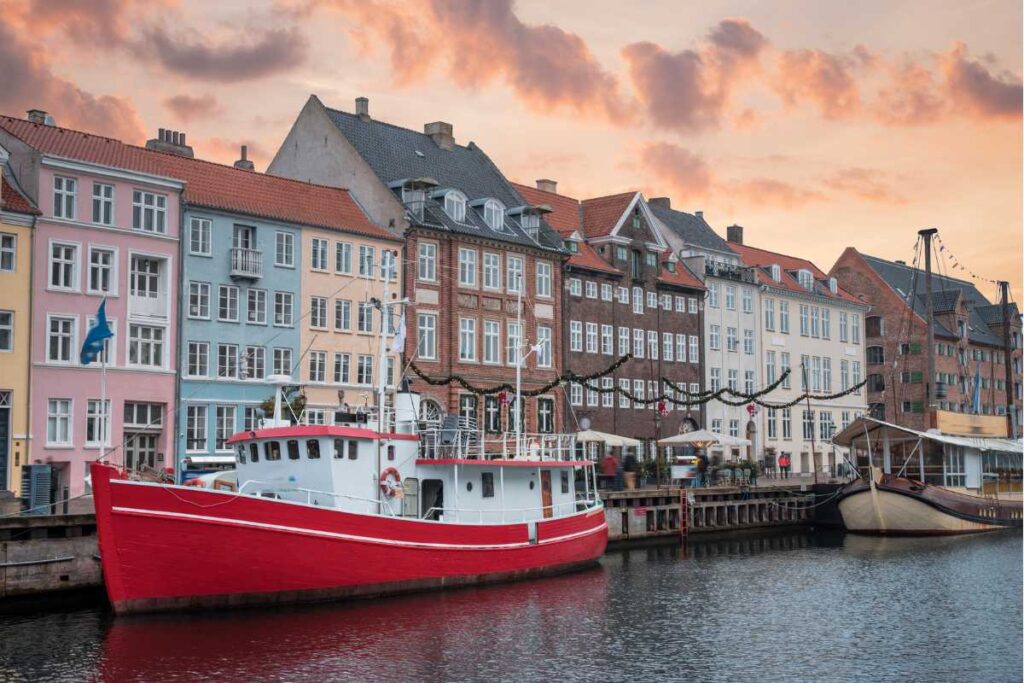
Nyhavn is a picturesque harbor area in central Copenhagen. The colorful houses and historic ships make it the most popular space for tourists to take photos, enjoy a meal or a drink or coffee at one of the many beautiful and cozy cafes and bars, or take a boat tour of the city. The area is particularly popular in the summer months when the weather is warm and sunny.
The Round Tower



The Round Tower is a historic tower located in the heart of Copenhagen. It was built in the 17th century as an astronomical observatory and also served as a church and a library. Today, you can walk to the top of the Round Tower for unforgetable views of the city. The tower also hosts various cultural events throughout the year, including concerts and exhibitions.
Christiansborg Palace
Christiansborg Palace is a stunning palace located on the island of Slotsholmen in central Copenhagen. It is home to the Danish Parliament, the Supreme Court, and the Royal Reception Rooms. Visitors can take guided tours of Christiansborg palace, including the opulent Royal Reception Rooms, and learn about the history of Danish royalty and government.
The Ny Carlsberg Glyptotek

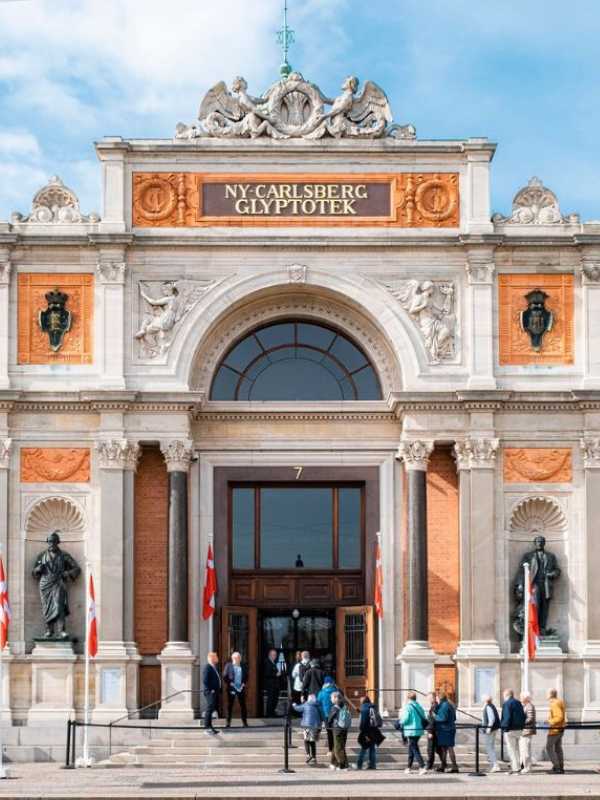
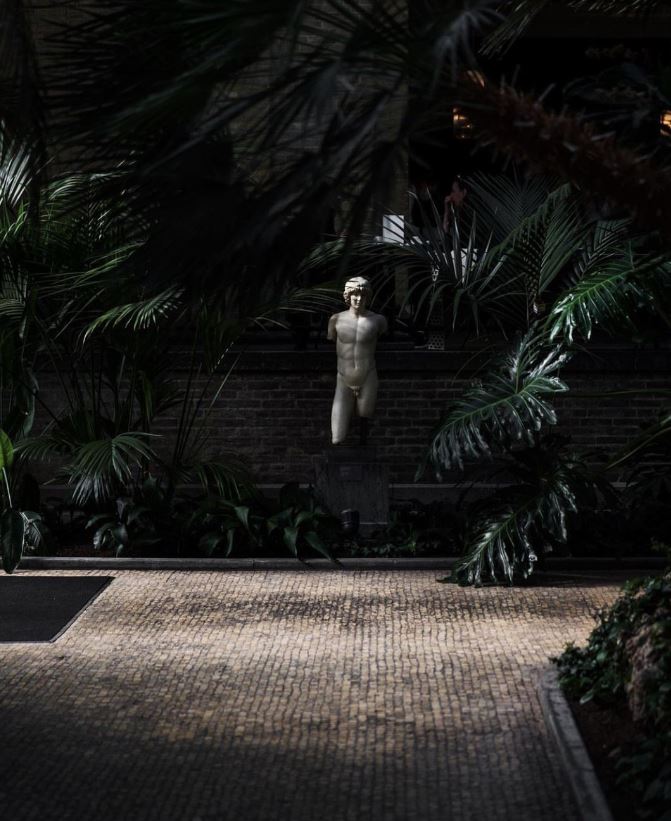
The Ny Carlsberg Glyptotek is an art museum located in central Copenhagen. It was founded by the brewer Carl Jacobsen in 1888 and features an impressive collection of ancient and modern art, including works by Van Gogh, Monet, and Picasso. The museum also houses a large collection of ancient Greek and Roman sculptures.
Strøget


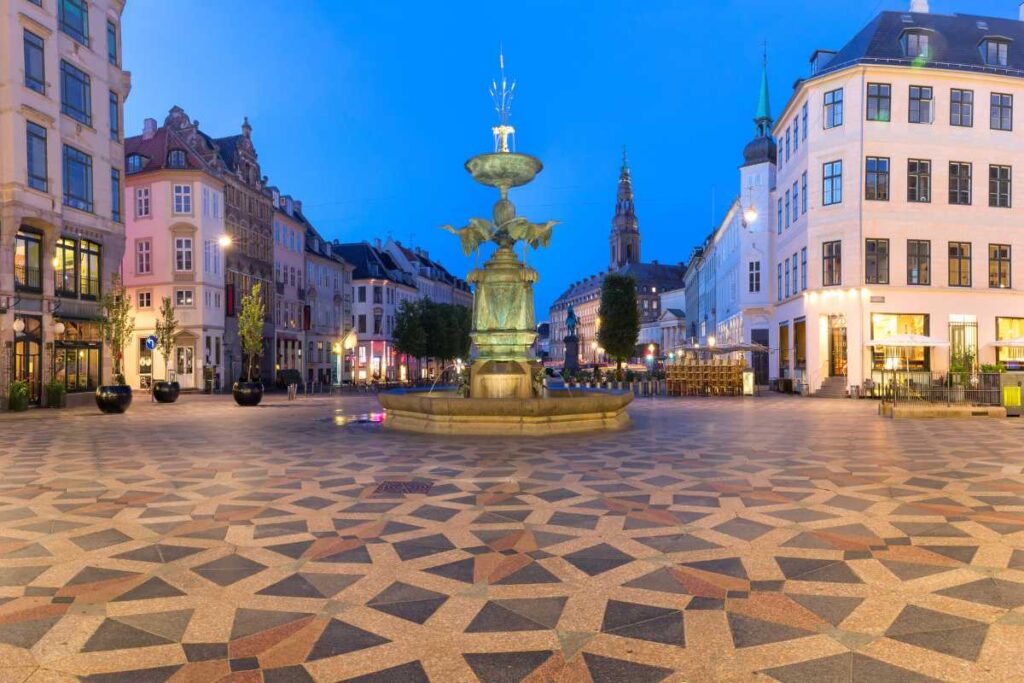
Strøget is a pedestrian shopping street in central Copenhagen. It is one of Europe’s longest shopping streets and offers a wide variety of shops, cafes, and restaurants. Strøget is particularly popular with tourists looking for souvenirs or local Danish products, such as cheese and chocolate.
The Copenhagen Opera House
The Copenhagen Opera House is a stunning building located on the harbor in central Copenhagen. It was designed by architect Henning Larsen and opened in 2005. The building is home to the Royal Danish Opera and hosts world-class performances throughout the year. You can also take guided tours of the building and learn about its history and design.
The Copenhagen Zoo
The Copenhagen Zoo is a popular attraction located in the Frederiksberg area of Copenhagen. It is home to over 4,000 animals from around the world, including lions, elephants, and polar bears. The zoo is known for its conservation.
Reffen

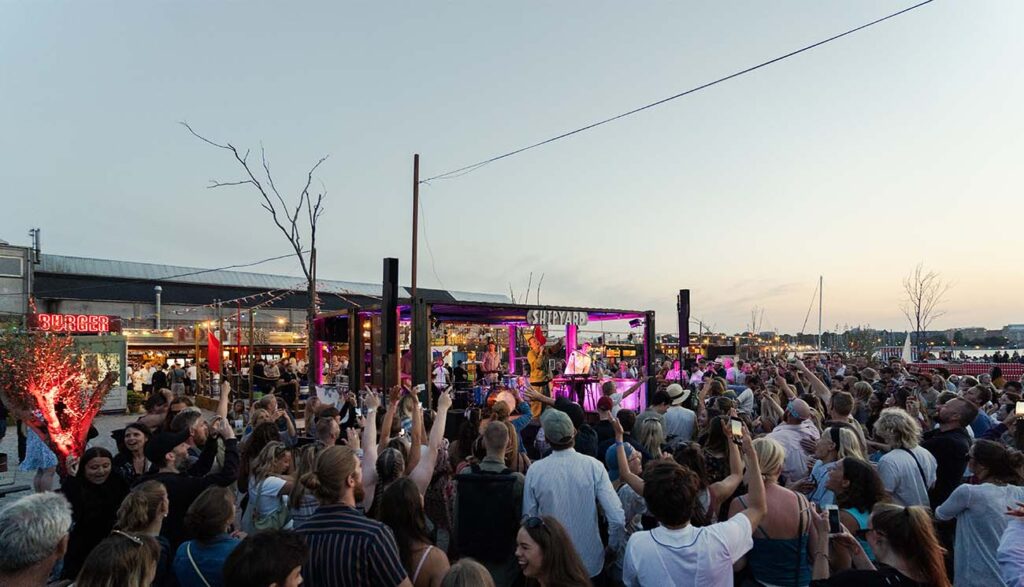
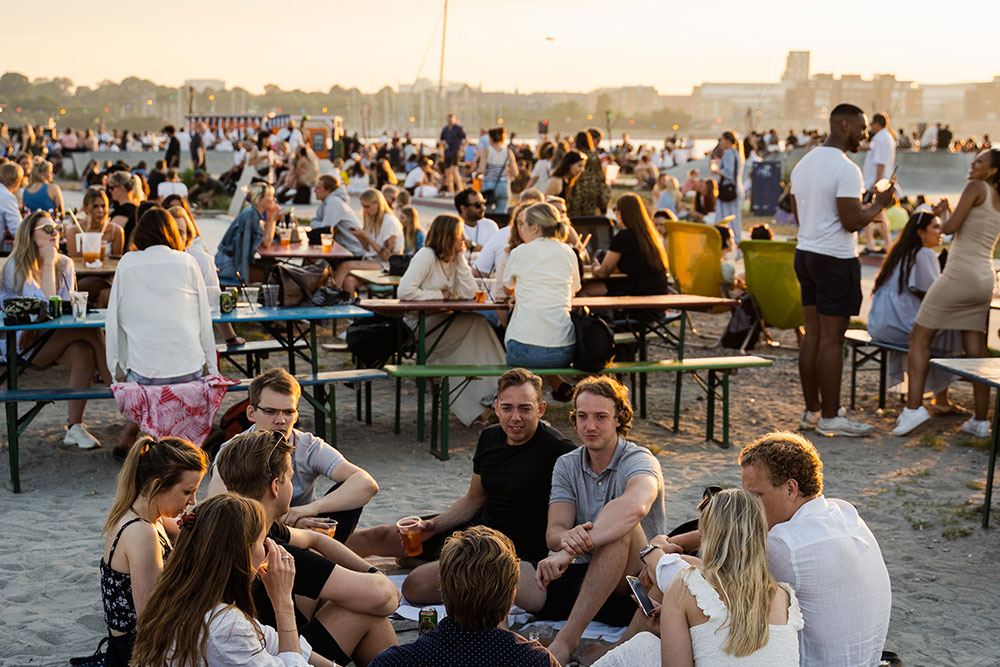

Reffen is a popular street food market located on Refshaleøen, an industrial area in Copenhagen. The market features over 50 stalls selling a wide variety of foods and drinks, ranging from traditional Danish cuisine to international dishes from around the world. The atmosphere is lively and bustling, with live music and entertainment throughout the day and evening.
The Little Mermaid
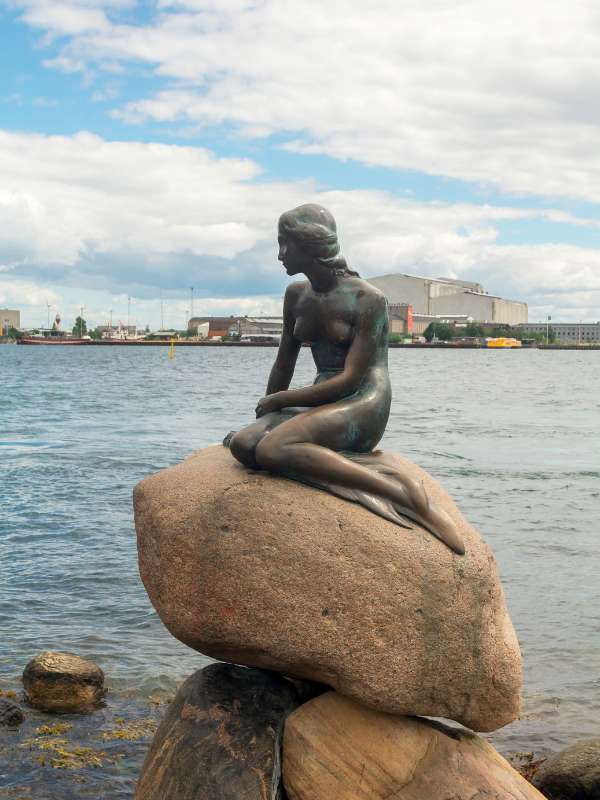

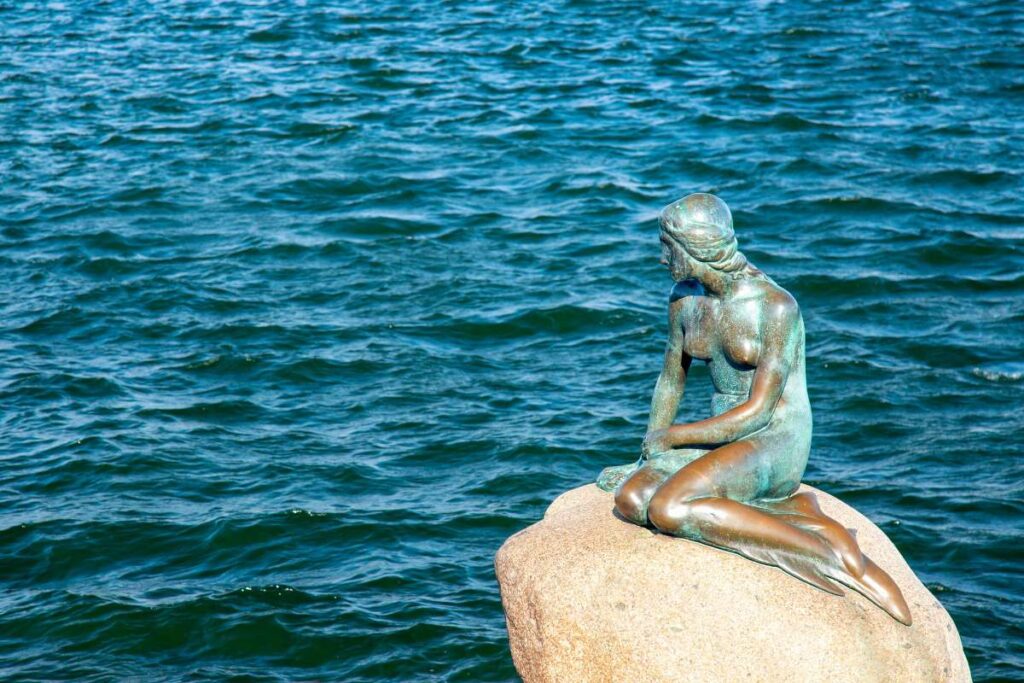
Finally, no trip to Copenhagen would be complete without a visit to the famous Little Mermaid statue. The statue, which was inspired by the fairy tale by Hans Christian Andersen, has become an iconic symbol of Copenhagen and is a popular spot for visitors to snap memories. The statue is located on a rock by the waterside at the Langelinie promenade and is a short walk from the city center.
Shopping in Copenhagen
Best shopping districts in Copenhagen
Copenhagen is a city that offers a unique shopping experience, with a range of districts catering to different styles and preferences. Some of the best shopping districts in the city include:
Strøget
The pedestrian street, Strøget, is one of the longest and oldest shopping streets in Europe, with a wide variety of shops ranging from high-end luxury brands to more affordable fashion and souvenir shops.
Vesterbro
This trendy neighborhood is home to a number of vintage and secondhand shops, as well as independent boutiques offering unique and quirky designs.
Nørrebro
This diverse and multicultural neighborhood has a number of independent shops and boutiques offering a range of styles and designs, as well as a vibrant street market selling everything from handmade jewelry to fresh produce.
Top shopping destinations in Copenhagen
Copenhagen also has a number of top shopping destinations that are worth checking out. Some of these include:
- Illum: This high-end department store is located in the heart of the city and features a wide variety of luxury brands and designer labels.
- Magasin du Nord: Another popular department store, Magasin du Nord features a range of international and Danish fashion brands, as well as a large selection of beauty and lifestyle products.
- Frederiksberg Centret: This shopping center is located in the stylish Frederiksberg neighborhood and features a range of fashion and lifestyle stoes, as well as a large food court and cinema.
Unique shops and boutiques to check out
Copenhagen is also home to a number of unique and independent shops and boutiques that are worth checking out. Some of these include:
- Hay House: This stylish concept store offers a range of furniture, home decor, and accessories designed by Danish brand Hay, as well as a selection of other Scandinavian design brands.
- Norse Store: This high-end menswear boutique offers a range of clothing and accessories from a variety of international and Scandinavian designers.
- Stilleben: This design shop features a range of unique and quirky home decor and accessories, including ceramics, textiles, and jewelry.
Tips for shopping in Copenhagen
If you’re planning a shopping trip to Copenhagen, here are a few tips to have in mind before you go:
- Look for tax-free shopping: Non-EU residents can often get a refund on VAT (value-added tax) when shopping in Denmark, so be sure to look for stores that offer tax-free shopping and bring your passport with you.
- Check store hours: Many stores in Copenhagen close early on Saturdays and are closed on Sundays, so be sure to check opening hours beforehand to avoid disappointment and also crowded lines.
- Wear comfortable shoes: Copenhagen is a city that is best experienced by foot or by bike and scooters, so be sure to wear comfortable shoes for all your shopping adventures.
FAQ
The best time to visit Copenhagen is from May to August when the weather is mild and the days are long.
Copenhagen can be quite expensive, especially when it comes to dining and accommodations. However, there are a lot of affordable options available, as well.
Some must-try Danish foods include Danish pastries, smørrebrød, pickled herring, and Danish meatballs (frikadeller).
Yes, Copenhagen is very vegetarian and vegan-friendly, with many restaurants offering plant-based options.
Copenhagen has a lively nightlife scene, with many bars and clubs staying open late (well for Europe) into the night. Some of the best areas for nightlife adventures include Vesterbro and Nørrebro.

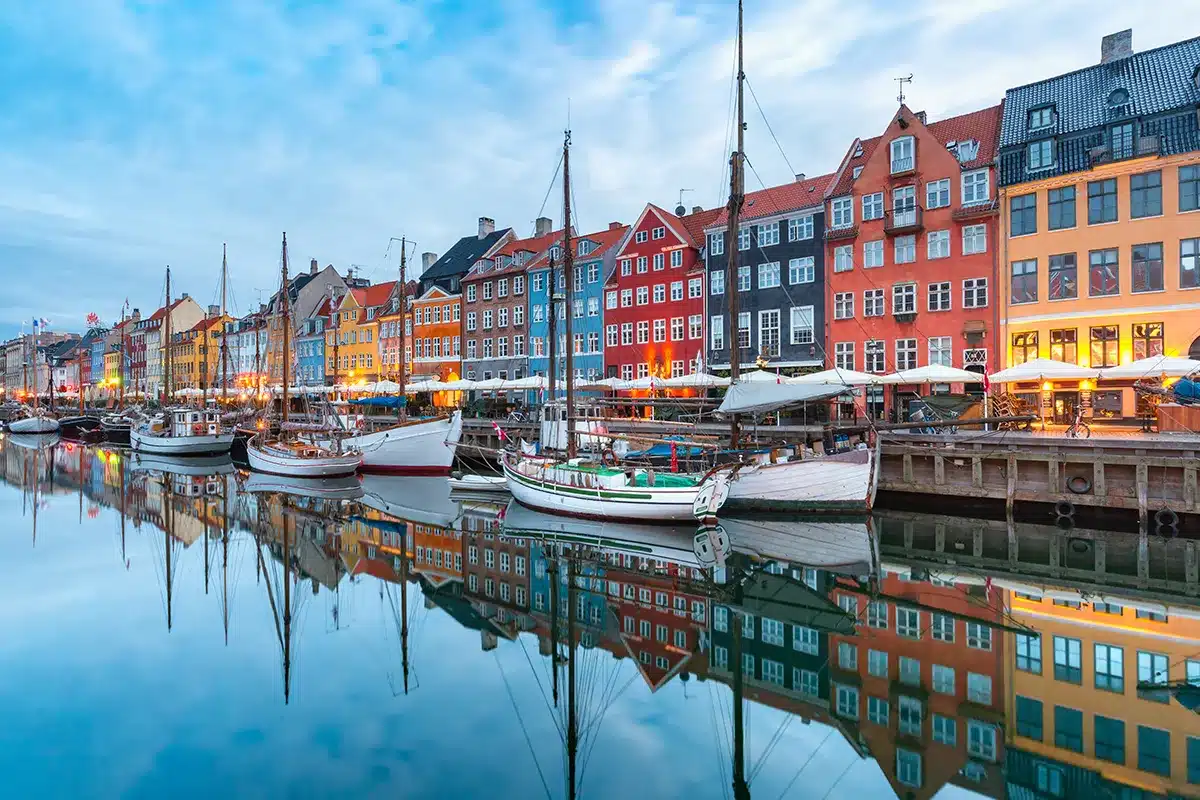
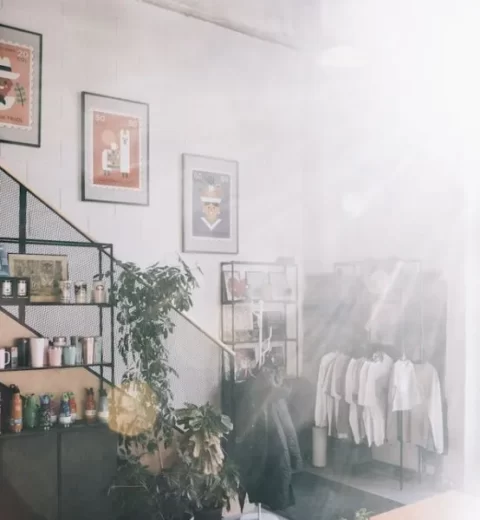


Tnx for your great information
Thanks for reading. If you happen to have more info that’s missing (which I’m sure there are) just let us know and we will add as they fit 🙂